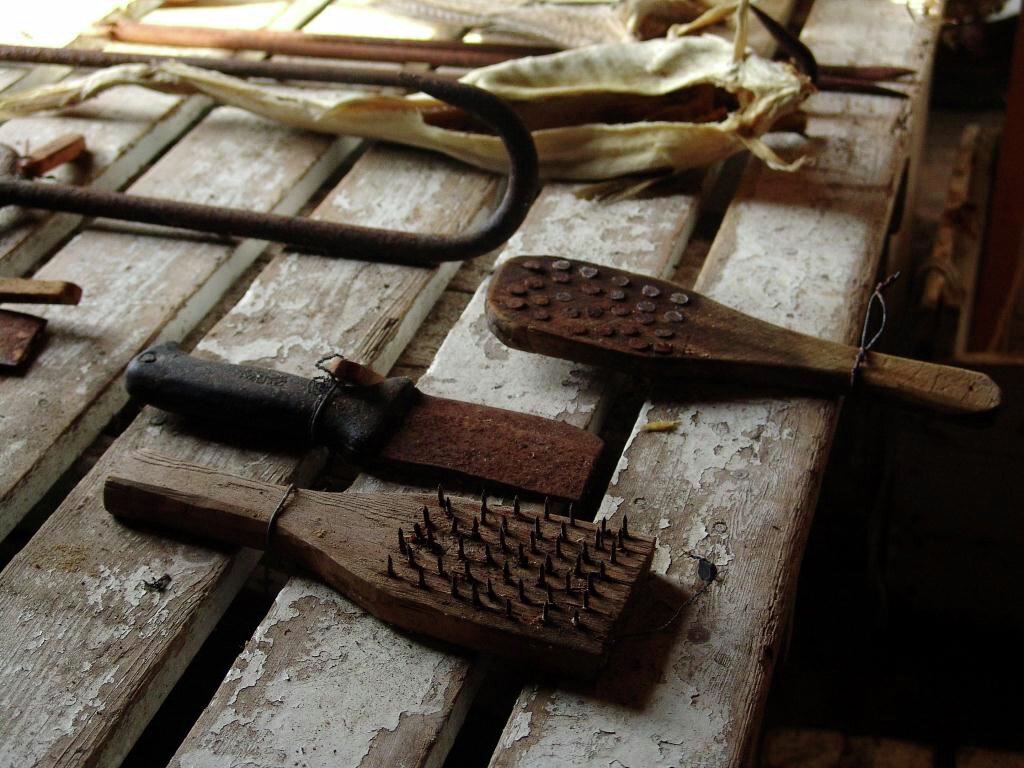




The cod-liver oil factory in Å is very old, probably dating back to 1850. In this building cod livers were boiled and turned into oil. A new cod-liver oil factory belonging to squire Ellingsen was built in the hamlet of Tind. The manufacture of cod-liver oil is demonstrated in this building, and the museum also sells its own brand of cod-liver oil.
Down by the old harbour, near the beach where they used to haul up the boats, you will find the oldest production plant in Å, the cod-liver oil factory. Down by the old harbour, near the beach where they used to haul up the boats, you will find the oldest production plant in Å, the cod-liver oil factory. Here, the fish were braced and hung up on the fish racks to dry, or they were split and salted to make klipfish. The roes were salted in enormous German wine vats of oak, and the cod liver was boiled or steamed into cod liver oil. In the old days, the liver was just left in the vats and the cod liver oil was skimmed off as the liver fermented in the heat of summer.
Later, they began to boil the cod liver in iron cauldrons in order to extract a greater yield of valuable cod liver oil. This was done all year round. The stench was rife all over the fishing village. “You can smell money”, people said of both this and the smell of dried fish. The old Norse name for cod liver oil was “lysi”-light, and the oil was actually used to fuel lamps all over Europe. Moreover, it was used for tanning skins, in the manufacture of paint and soap, and lots more. Cod liver oil and stockfish were for centuries Norway’s most valuable commodity.
Every summer, thousands of barrels of cod liver oil were transported on cargo vessels, the so-called “jekt”s, from Lofoten to Bergen and further on to Europe. Fish, liver and roes, cooked together and referred to as “mølje”, have always been an important and healthy part of the coastal people’s diet. Vitamins A and D and the Omega 3 unsaturated fatty acids in the cod liver oil, helped keep people healthy. It was often said that the cod liver oil makers and other people that took a lot of cod liver oil were seemingly never ill.
Pharmacist Peter Møller wanted to introduce more people to the healthy effects of cod liver oil. In 1854, he built a lined cauldron, filled the space between the cauldron and its lining with water, and steam-boiled the fresh cod livers. In this way he greatly improved the quality of the oil. The invention of medicinal cod liver oil was honoured with awards at many trade fairs in Norway and abroad. Later, the cod liver was steamed in conical oak barrels. In order to extract the last remaining drops of precious cod liver oil, the residue of the liver was then squeezed in a liver press before going to the manufacture of cattle feed or fertiliser.
Today, much of the old production equipment can still be seen in the cod liver oil factory at the Norwegian Fishing Village Museum in Å. Cod liver oil is still produced there in the old fashioned manner, and small bottles of it together with cod liver oil lamps are on sale as mementoes from Lofoten.
Facilities
Was this helpful?
Thank you for your feedback!
Thank you for your feedback!
We are reading all feedback, but unfortunately we can not respond.

